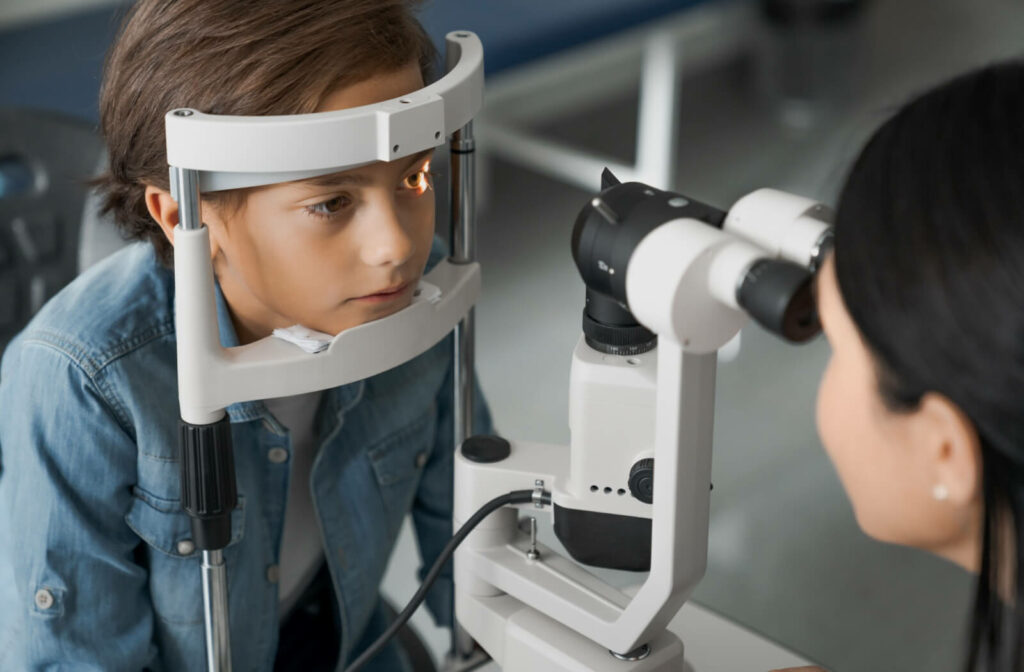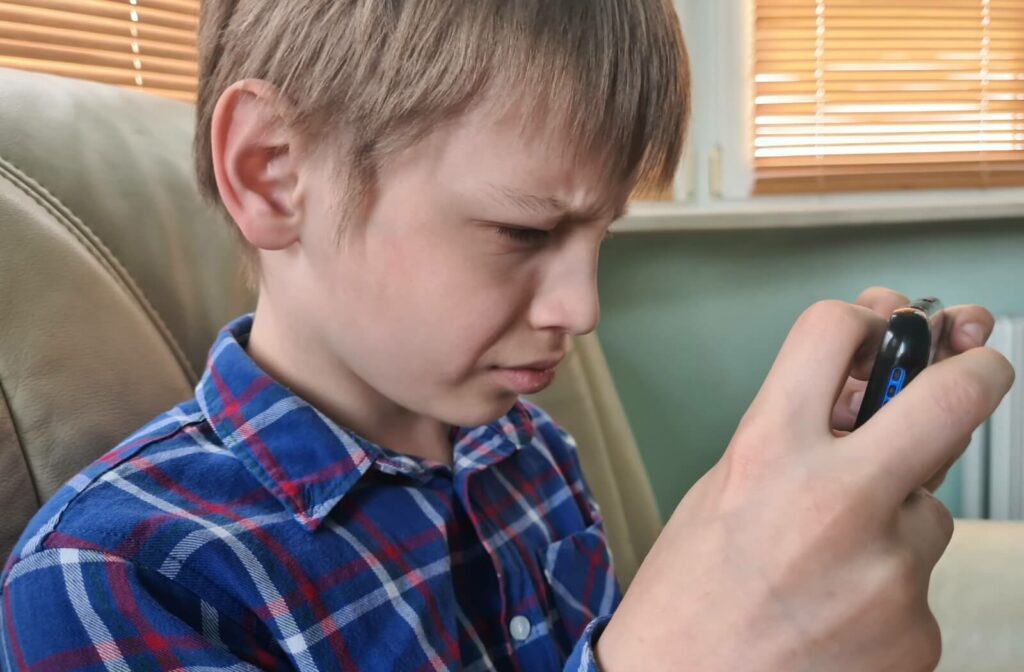Many patients wear glasses or contacts to treat refractive errors like myopia and hyperopia. These common refractive errors have many similarities but aren’t the same condition.
Myopia and hyperopia both cause blurry vision, but they have some differences. They affect vision from different distances, and myopia commonly progresses while hyperopia doesn’t. Myopia progression can affect your child’s future vision and eye health.
What Is Myopia?
Myopia, also known as nearsightedness, is a common vision problem. It occurs due to the shape of someone’s eye—it can be too long, or the cornea may have a steep curve, causing light to focus in front of the retina instead of on it.
Symptoms of myopia include:
- Blurry vision
- Strained eyes
- Frequent squinting
Myopia typically develops during childhood and can progress over time, leading to more severe nearsightedness if left untreated. Children with myopia might not recognize their visual struggles because they assume everyone sees the same.
You can look for signs of myopia in your child, such as struggles in school, frequent eye rubbing, or a tendency to sit near the TV or at the front in class, to know when to book an eye exam.
Other factors that can influence myopia development include:
What Is Hyperopia?
Hyperopia (farsightedness) is a refractive error where nearby objects appear blurry while objects at a distance appear clear. This occurs when the eye is shorter than normal, causing light to focus behind the retina instead of directly on it.
Some common hyperopia symptoms include:
- Blurred vision
- Headaches
- Tired eyes
- Eye strain
- Difficulty reading close-up words
Hyperopia can be corrected with prescription eyeglasses or contact lenses. Some patients may also seek laser eye surgery to help improve their vision without needing corrective lenses.
What’s the Difference Between Myopia & Hyperopia?
There are multiple differences between myopia and hyperopia, the main one being that each condition affects vision differently. Myopia causes blurry vision when looking at distant objects, while hyperopia causes blurred vision when looking at nearby objects.
Another difference between these refractive errors is that myopia can progress with time during childhood, placing your child’s vision and eye health at risk.
Myopia Progression Can Affect Your Child’s Eye Health
Myopia progression can affect your child’s vision as they get older. This progression tends to stabilize in early adulthood, which means your child’s myopia can worsen for years, causing them to rely on strong prescriptions when they’re older.
Besides vision, myopia progression can risk your child’s eye health. When myopia becomes severe, it’s known as high myopia.
High myopia means that your child requires significant vision correction to see clearly. It also increases the risk of many eye conditions.
Someone with high myopia is at a greater risk of developing:
While high myopia can significantly affect your child’s eye health and vision, early diagnosis and treatment can help slow its progression.
How Can You Treat Myopia Progression?
Myopia progression can seem scary, but there are treatments available to help slow progression. Myopia control treatments, such as specialized contact lenses, orthokeratology, or medicated eye drops, affect how the eye grows to limit its axial (lengthwise) growth.
It’s important to note that no treatment will 100% slow myopia progression. We may recommend several treatments to help protect your child’s vision.
Orthokeratology (Ortho-K)
Orthokeratology is a common myopia treatment. Your child wears these contacts while they sleep, where the lenses gently reshape the cornea, providing clear vision during the day without needing glasses or contacts.
Studies have shown that ortho-k can effectively slow myopia progression in children.
Specialty Contact Lenses
While traditional single-vision contact lenses can’t control myopia progression, specialized lenses can. These lenses work by adjusting how light enters the eye, which can help slow eye growth.
Many specialized contacts exist for myopia control today, including ACUVUE Ability 1-Day and MiSight lenses.
Myopia Eyeglasses
Regular eyeglasses focus light on the centre of the retina but behind the retina in the periphery (side), stimulating the eye to grow longer. Myopia control eyeglasses focus light on or in front of the retina in the periphery, signalling the eye to stop or slow its growth. This mechanic is called “peripheral defocus” and is achieved in different ways between the different brands.
The aim of these glasses is to slow the growth of the eye and mitigate high levels of myopia.
Atropine Eye Drops
Atropine is a medication with multiple uses, one of which is myopia control. It’s been found to be effective at slowing myopia progression by 30–50%, although the mechanism behind how it works isn’t known.
Alongside atropine use, your child will need to wear their usual glasses or contact lenses during the day.

Find the Right Treatment for Your Child’s Needs
While myopia and hyperopia both affect vision, myopia can significantly impact your child’s future. This condition can progress and increase their risk of eye disease. However, we can help diagnose and treat myopia as early as possible.
Contact Lowy & Sewell Eye Care if your child experiences myopia symptoms.



